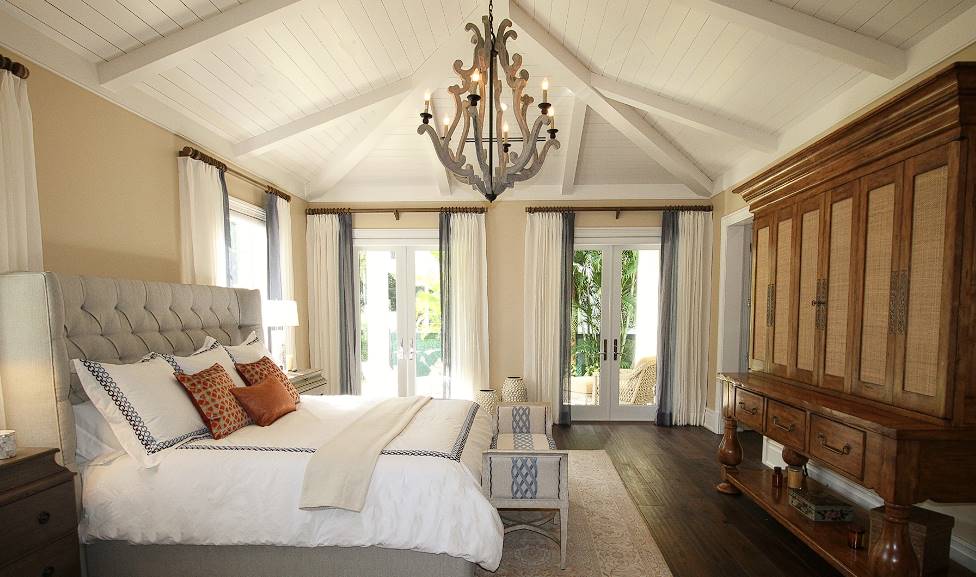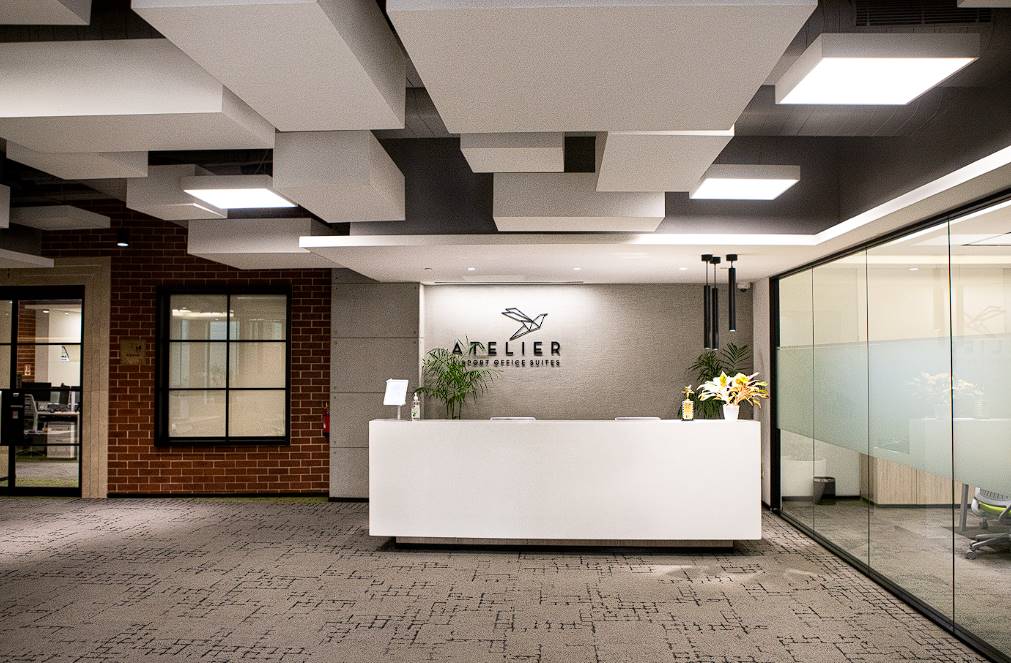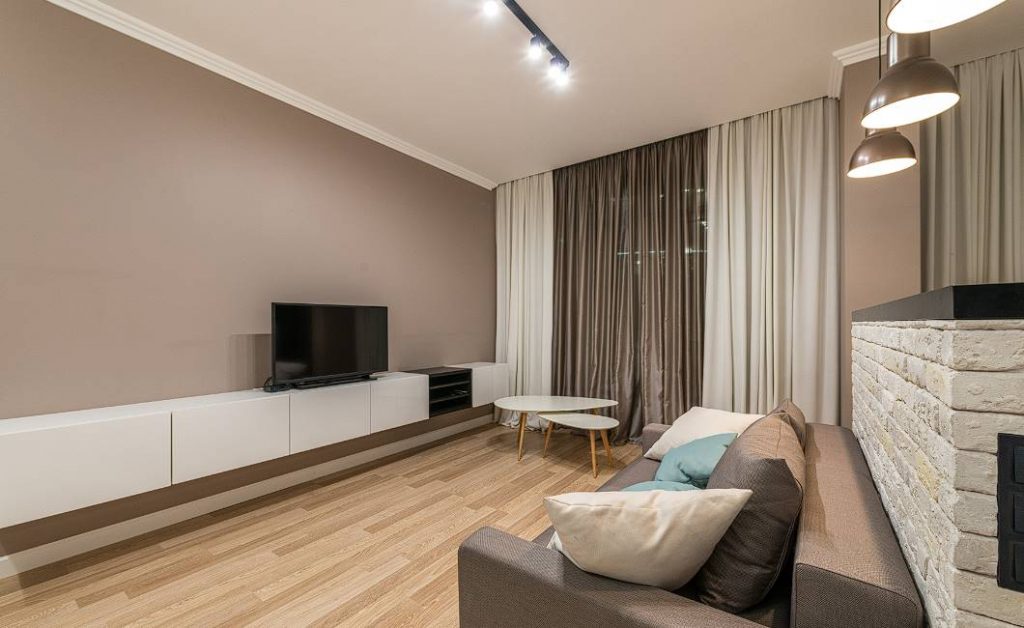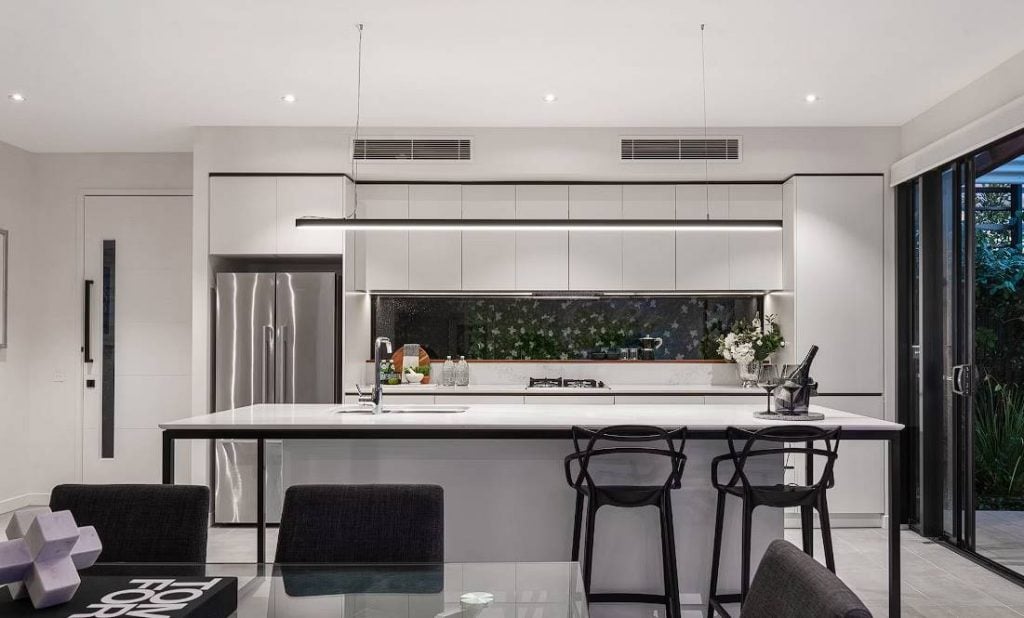Have you ever entered a space and been blown away by the incredible acoustics? An acoustic ceiling was likely installed. Architectural elements like acoustic ceilings, which help to dampen ambient noise and evenly disperse audio, are fundamental to creating a pleasant aural environment. However, only some people know that acoustic ceilings come in different styles, each with its own set of advantages. This article will discuss a variety of acoustic ceilings, illuminating their features and uses.
There's a wide variety to choose from regarding acoustic ceilings. Tiles or panels are suspended from the structural ceiling to create a suspended ceiling, the most popular type. These ceilings' several uses, including high sound absorption and simple installation/replacement, make them a great choice. A thin, tensioned membrane is stretched across a framework to create an acoustic stretch ceiling, another common choice. This ceiling style not only improves acoustics but also looks very contemporary and chic. The acoustic environment can also be improved with the help of suspended objects called acoustic barriers and clouds, which are meant to divert and absorb sound.
However, they merely sample the countless design options available for acoustic ceilings. So that we might learn more about it, the following sections will examine the benefits and uses for each acoustic ceiling type, empowering you to make educated decisions for your area. Let's take this trip together and learn more about acoustic ceilings.
How Do Acoustic Ceilings Work?
Regarding sound management and acoustic performance, nothing beats a properly constructed acoustic ceiling, often known as a soundproof or a suspended ceiling. Offices, classrooms, hospitals, theatres, recording studios, and homes all frequently feature these ceilings.
Acoustic ceilings are installed in rooms to improve the acoustics and lower ambient noise. Materials, including mineral fibres, fibreglass, and perforated metal panels, are used in construction because they dampen ambient noise. In addition, these materials reduce echo and echo cancellation, making the space more peaceful and pleasant to spend time in.
The use of an acoustic ceiling has many advantages. They can lessen the effects of echo and other background noise, making it simpler to carry on conversations and comprehend what others say. In addition, they help people focus and get more done in noisy environments like offices or classrooms. Because they reduce the amount of echo and external noise, acoustic ceilings are a great addition to recording studios and performance halls.
It is simple to choose an acoustic ceiling that complements the existing design of a space because they come in so many variety designs, textures, and colours. Ceiling tiles or panels are often fastened to a metal grid that is hung from the joists or beams above during installation.
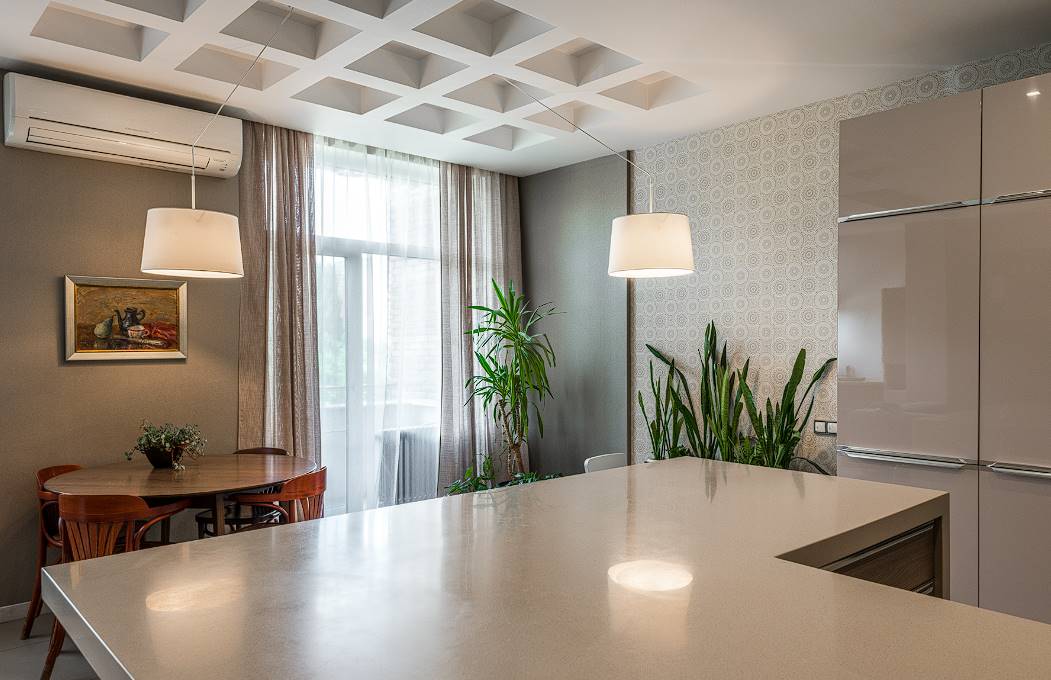
Sound Performance & Suspended Ceilings
Suspended acoustic ceilings are the undisputed champions of noise reduction and aesthetics. Here are a few of how acoustic ceilings can improve the aural environment of your room:
Sound Diffusion
The term "sound diffusion" describes the spreading out of sound waves throughout a room. Suspended ceilings with good sound diffusion disperse sound waves in all directions, lowering the overall volume and eliminating reverberation. Sound dispersal improves a room's acoustics by creating a more uniform sonic environment.
Sound Absorption
Sound absorption is the property of a material or surface to take in sound waves and convert them into heat rather than bounce them back into the air. Because of its ability to absorb and dampen sound waves, sound absorption significantly reduces noise levels when it comes to suspended ceilings. Suspended ceilings can be made more acoustically pleasant by including sound-absorbing materials, like acoustic panels or specialised ceiling tiles, in their construction. This reduces the volume of reverberant sound, dampens echoes, and enhances the clarity of individual sounds.
Sound Reflection
When sound waves strike a surface and bounce back, this phenomenon is called sound reflection. Sound reflection can be regulated and manipulated to produce a custom aural setting when applied to suspended ceilings. Sound can be more evenly dispersed in a room if the ceiling is constructed in such a way as to reflect or reroute sound waves. Suspended ceilings can be constructed to reduce unwanted sound reflections and focus sound where needed most, such as during speech intelligibility or musical performances.
How To Choose Acoustic Ceiling Panels For Sound Reduction?
Locate the best acoustic ceiling tiles and other ceiling goods for your construction job. Access CAD drawings and product specifications for our acoustic ceiling panels, suspended ceilings, wall claddings, ventilation, metal acoustic tiles, sun louvres, and frame systems via the links in this section of our website's technical library.
Acoustics
Ceilings with acoustic properties are installed to lessen the echoes and reverberations of ambient noise. These ceilings reduce ambient noise and improve speech intelligibility, creating a more comfortable and productive work environment.
Fire Resistance
Fireproof materials and coatings are used in the production of acoustic ceilings. This safety measure assures that the ceiling will burn more slowly in the case of a fire, giving people more time to evacuate the building safely.
Humidity/Corrosion
There are acoustic ceilings available that are corrosion- and humidity-proof. Because of this, they can be set up in places with a lot of wetness, like by a pool, in a bathroom, or a kitchen. Mould, mildew, and rust are fine for the materials utilised in these ceilings.
Durability
Acoustic ceilings are constructed to survive for a very long time. They are built to last through the rigours of regular use, including impacts and other forms of physical stress. Because of the high quality of the materials used, these ceilings will look great and serve their purpose for many years to come.
Light Reflection
Light reflection can be maximised in a room by designing an acoustic ceiling. These ceilings assist in uniformly dispersing existing natural or artificial illumination by combining materials with strong light reflection qualities. With adequate lighting, this can save energy costs and make the area more pleasant.
Design Trends
Metal acoustic tiles, clouds, and canopies have become essential elements in meeting performance standards while providing architects with the flexibility to explore architectural designs. Architectural clouds, also known as canopies, refer to acoustic ceiling panels that are suspended from carrier rails to effectively reduce ambient noise. These solutions have gained popularity in numerous public venues due to their ability to create a pleasant acoustic environment. Additionally, there are acoustic ceiling panels and metal tiles specifically designed for professional settings, while others are tailored for use in gyms and swimming pools. If you are in Melbourne and seeking guidance on selecting the most suitable material for your project, a skilled plasterer can provide expert assistance and recommendations.
Consult Our Design Team
The design team at Plasterer Melbourne is dedicated to assisting clients in finding the perfect solutions for their construction projects, including metal acoustic ceiling tiles and systems. If you require guidance in locating these products or any other ideal materials, the team is ready to collaborate with you to create a custom product that meets your specific requirements. Whether it's for enhancing acoustic performance or achieving architectural aesthetics, Plasterer Melbourne's design team is committed to delivering unique and tailored solutions for your construction needs.
Innovative Acoustic Ceiling Systems
Several modern acoustic ceiling systems are available, each with its advantages. Some instances are listed below:
Stretch Fabric Systems
When it comes to acoustic ceilings, stretch fabric systems are crucial. A fabric membrane is stretched across a frame in these systems, creating a smooth, flat, and aesthetically pleasing ceiling surface. Some of the most salient features of acoustic ceiling systems that involve stretch fabric are as follows:
- Acoustic Performance: A space's acoustic qualities can be improved using a stretch fabric system.
- Aesthetic Appeal: Stretch fabric systems come in various patterns and colours, making them easy to tailor to any existing decor.
- Versatility: The systems based on stretch fabrics have several potential uses.
- Maintenance and Accessibility: Keeping a stretch fabric system in good condition is not too difficult.
- Energy Efficiency: Even the material used in stretch fabric systems can help save power.
Microperforated Ceiling Panels
Microperforated panels can absorb sound through their tiny holes while yet giving off the impression of being a solid surface. These panels are made to scatter and trap sound waves, making it easier to hear and be heard in a room. To further understand the significance of microperforated ceiling panels in acoustic ceiling systems, consider the following:
- Sound Absorption: Panels with micro-perforations can absorb more sound since their surface area increases.
- Noise Reduction: Noise can be mitigated using microperforated ceiling panels due to their ability to collect and dissipate sound energy.
- Aesthetics: Microperforated ceiling panels help with noise reduction and offer a nice design element to any room.
- HVAC Integration: The HVAC (heating, ventilation, air conditioning) system can be connected to microperforated ceiling panels to improve airflow.
- Sustainability: Microperforated ceiling panels are becoming increasingly popular, and many are eco-friendly and created from recycled materials.
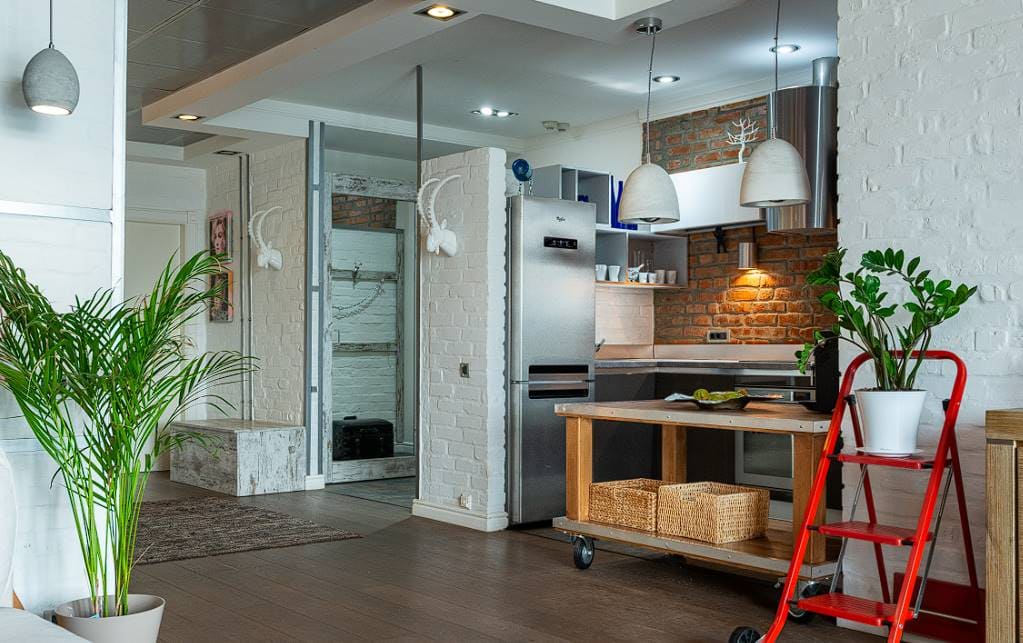
Acoustic Clouds
To dampen ambient noise, acoustic clouds can be hung from the ceiling. They improve a room's acoustic performance and may be configured in a wide variety of ways because of their many different sizes, shapes, and designs.
Wood Wool Panels
Wood wool panels are strong and absorbent materials made from wood fibres bound together with cement or binders. These panels' natural, textured look adds warmth and character to any room while also decreasing noise levels.
Acoustic Ceiling Baffles
In acoustic ceiling systems, baffles play a crucial function. These baffles are meant to enhance the acoustics of a room and lessen the volume of distracting background noise. They are often made of sound-absorbing materials like fabric-wrapped fibreglass or acoustic foam, suspended vertically from the ceiling.
Acoustic ceiling baffles are installed to reduce echo and reverberation. An unpleasant acoustic environment can be created when sound waves reflect off hard surfaces like walls, floors, and ceilings for a long time. Baffles are effective in dampening these sound waves, which in turn reduces echo and improves the clarity of speech.
The acoustic balance and management of a space can be improved through the judicious use of acoustic ceiling baffles. Placing baffles in strategic locations can reduce echoes and improve the quality of the acoustic environment. This is especially useful in settings where effective communication and little background noise are paramount, such as classrooms, workplaces, auditoriums, and restaurants.
Modular Acoustic Ceiling Tiles
These are ceiling tiles made for the sole purpose of dampening noise. They may be arranged in various patterns to make eye-catching designs and are simple to set up. Lighting fixtures and ventilation systems are the only useful components that may be built into a modular ceiling system. Some of the many benefits of acoustic ceiling systems that make use of modular acoustic ceiling tiles include the following:
- Sound absorption: The materials used to create acoustic ceiling tiles are known for their exceptional ability to dampen ambient noise.
- Noise reduction: Ceilings covered in modular acoustic tiles effectively dampen sound, both from the outside and within a building.
- Aesthetics: A wide selection of acoustic ceiling tiles are available, so they may be styled to fit any design scheme.
- Accessibility: The plenum is often positioned above modular acoustic ceiling tiles and houses mechanical, electrical, and plumbing systems.
- Fire safety and insulation: To comply with safety standards, acoustic ceiling tiles are often created from fireproof materials.
Conclusion
Acoustic ceilings absorb and distribute sound. Suspended, stretch, barrier, and cloud acoustic ceilings are available. Rooms with acoustic ceilings reduce noise. Construction materials, including mineral fibres, fibreglass, and perforated metal panels minimise ambient noise and echo. Acoustic ceilings reduce echo and background noise, simplify speech, and help people focus and get more done in loud workplaces.
Acoustic ceilings have many styles, textures, and hues. Suspended acoustic ceilings are the noise-reduction and aesthetic champions. Sound diffusion, absorption, and reflection can be controlled to create a personalised aural environment. Access CAD drawings and product specifications for acoustic ceiling panels, suspended ceilings, wall claddings, ventilation, metal acoustic tiles, solar louvres, and frame systems to choose sound-reducing panels. Acoustic ceilings are also fire-resistant.
Acoustic ceilings offer safety, durability, light reflection, design trends, and architectural aesthetics. They can be installed in wet areas like around a pool, in a bathroom, or in a kitchen and built to meet performance criteria while allowing architects to experiment with designs. Plasterer Melbourne's design team helps clients choose metal acoustic ceiling tiles and systems for their construction projects. Stretch Fabric Systems are innovative acoustic ceilings. Stretch fabric methods make acoustic ceilings smooth, flat, and attractive.
These systems are adaptable, colourful, and power-saving. Microperforated ceiling panels attenuate sound while appearing substantial. Acoustic clouds and wood wool panels reduce noise. Acoustic ceiling baffles reduce reverberation. Acoustic ceiling baffles minimise echoes and enhance acoustics.
Modular Acoustic Ceiling Tiles dampen noise. They're easy to arrange and create eye-catching arrangements. Modular acoustic ceiling systems improve sound absorption, fire safety, aesthetics, accessibility, and insulation.
Content Summary
- Acoustic ceilings come in different styles with unique advantages.
- Suspended ceilings are the most popular type, offering high sound absorption and easy installation.
- Acoustic stretch ceilings improve acoustics while adding a contemporary and chic look.
- Acoustic barriers and clouds divert and absorb sound to enhance the acoustic environment.
- Acoustic ceilings are installed to improve acoustics and lower ambient noise.
- Materials like mineral fibres and perforated metal panels dampen ambient noise.
- Acoustic ceilings reduce echo and improve speech intelligibility.
- They help people focus and increase productivity in noisy environments.
- Acoustic ceilings are suitable for offices, classrooms, hospitals, recording studios, and homes.
- Various designs, textures, and colours are available for acoustic ceilings.
- Suspended ceilings with good sound diffusion lower overall volume and eliminate reverberation.
- Sound absorption reduces noise levels in suspended ceilings.
- Sound reflection can be controlled and manipulated in acoustic ceilings.
- Suspended ceilings can be constructed to reduce unwanted sound reflections.
- Acoustic ceilings contribute to fire resistance and safety in buildings.
- Corrosion- and humidity-proof acoustic ceilings are suitable for wet areas.
- Acoustic ceilings are durable and designed to withstand impacts and physical stress.
- They maximise light reflection and enhance the overall lighting in a room.
- Metal acoustic tiles, clouds, and canopies provide performance and architectural flexibility.
- Acoustic ceiling panels are tailored for professional settings, gyms, and swimming pools.
- The design team at Plasterer Melbourne assists in finding ideal acoustic ceiling solutions.
- Innovative acoustic ceiling systems include stretch fabric systems and microperforated panels.
- Stretch fabric systems improve acoustics and offer aesthetic appeal.
- Microperforated panels absorb sound and provide noise reduction.
- Acoustic clouds hanging from the ceiling dampen ambient noise and improve acoustics.
- Wood wool panels decrease noise levels and add warmth to a room.
- Acoustic ceiling baffles reduce echo and reverberation.
- Modular acoustic ceiling tiles dampen noise and offer design flexibility.
- Acoustic ceiling tiles contribute to fire safety and insulation.
- Plasterer Melbourne's design team collaborates to create custom solutions for construction projects.
Frequently Asked Questions
Acoustic ceilings can be installed in existing spaces. Suspended acoustic ceilings are versatile and can be retrofitted onto an existing ceiling. However, it's important to assess the structural integrity and consult with a professional for proper installation.
Acoustic ceilings can improve energy efficiency by enhancing the insulation properties of a space. They help reduce heat loss or gain through the ceiling, resulting in reduced energy consumption for heating or cooling.
Acoustic ceilings can be painted to match the desired aesthetic of a space. However, it's important to use paint specifically designed for acoustic materials to maintain their sound-absorbing properties. Customization options also include printed artwork, logos, or patterns on certain types of acoustic ceilings.
Acoustic ceilings can contribute to fire safety. Certain types of acoustic ceilings are designed to have fire-resistant properties, helping to prevent the spread of fire and providing additional time for evacuation.
The lifespan of an acoustic ceiling depends on various factors such as material quality, maintenance, and environmental conditions. Generally, well-maintained acoustic ceilings can last for 10 to 20 years or more.

